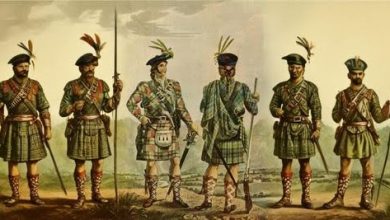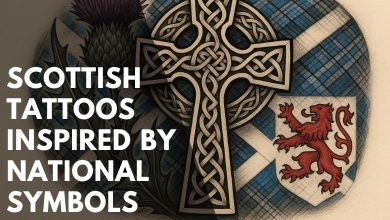A Complete Guide of Clan Robertson or Donnachaidh
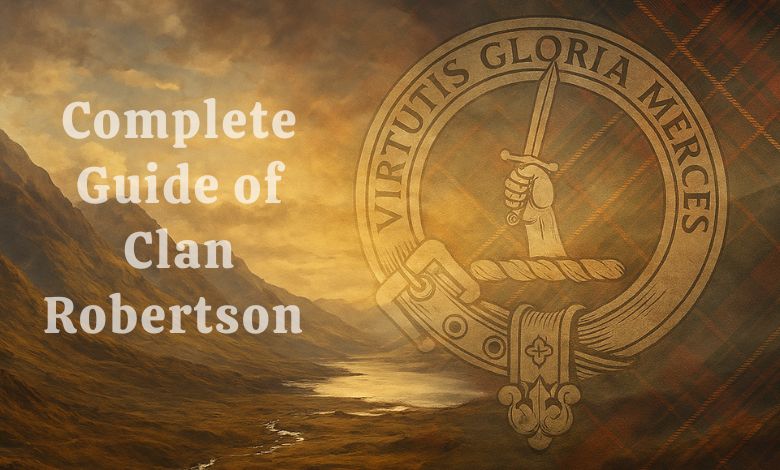
Clan Robertson has registered itself in the list of oldest Scottish clans who still are attached to their past. The clan is the only one still using its Gaelic name “Donnachaidh” instead of adopting a modern name like other Scottish tribes. Their role has been precious from Scotland War of Independence I to preserving Scottish heritage till the day. Offering our readers a high level of knowledge about this clan including history, crest and tartan, and more is the purpose of this article. So, no more wait and let us start with the history of the tribe.
The History
The Robertson clan is more appropriately known as “Clan Donnachaidh.” The Robertsons claim their origin from Crinan, Lord of Atholl, who was the ancestor of Duncan I, King of the Scots. Their grandfather Duncan commanded the Clan in the Battle of Bannockburn. He was a passionate supporter of Robert the Bruce.
Robert Riach, a clan leader, was famous for his devotion to the Stewarts. Therefore, his name was adopted as the common surname of the clan Robertson. Additionally, the clan received a symbolic commemoration through modifications to their coat of arms. As a result, Robertson, the chief of the clan, adopted a hand holding an imperial royal crown as his crest, with a man in chains beneath, symbolising the regicide.
Clan Motto and Tartan Pattern
Like every Scottish clan, Donnachaidh also has a motto, crest, and tartan pattern. There was no war to which this tribe did not contribute, specifically when the center of attention was Scotland. The clan was popular for its good fighting skills and strategies. Most importantly, it had lion-hearted people and this nature let them adopt a motto “Virtutis gloria merces,” which translates to “Glory is the reward of valour.”
Before we discuss Clan Robertson’s tartan patterns, let us clarify that the clan further has branches. The colour and patterns alter a bit accordingly. Therefore, the major patterns include red, green, blue, and black shades. Every colour has a specific representation telling about the nature of the clan. Today, a majority prefer wearing Robertson Tartan Kilts which are available at UTK UK, a leading online kilt-selling brand.
Clan Duncan Crest
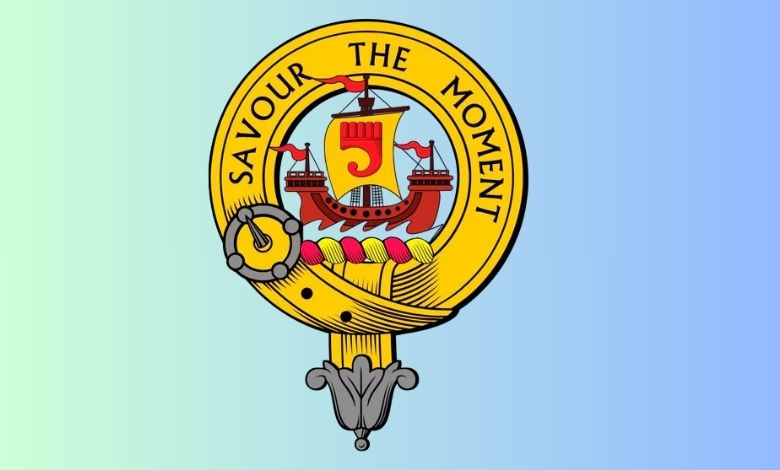
The crest of Clan Donnachaidh, also known as Clan Duncan, is a symbol of the Scottish clan. Surprisingly the crest also has a long and proud history. In the crest,a dexter hand holds an imperial crown, which is a kind of pointed wooden post. This image reveals their grip on strength and defense.
The clan’s roots go back to the ancient Scottish king Donnachaidh. He was believed to come from the Gaelic “Donnchadh,” meaning Duncan. Over time, the clan played an important role in Scottish history, especially in the Highlands. They loyally supported the Scottish throne and fought in many battles. Today, the crest still symbolizes the proud legacy and courage of Clan Donnachaidh’s ancestors.
Clan Donnachaidh and Saint Columbia
If we talk about the belief system of Clan Donnachaidh, they were Christians from day one. They used to follow a number of saints while Saint Columbia is a prominent name among them. He was an apostle of Jesus Christ who was a popular healer. He also used to calm the storms and most importantly, he had the power to re-live the dead people.
The ascendants of Robertson started following him around 600 AD. Another mythology favoring the connection of the clan with this particular saint is the dove on their crest. The name of the saint is “Colmcille” which means a dove of the church. It is said that this dove in the crest is in love with this sacred personality.
Clan Duncan’s Role in Scottish Wars
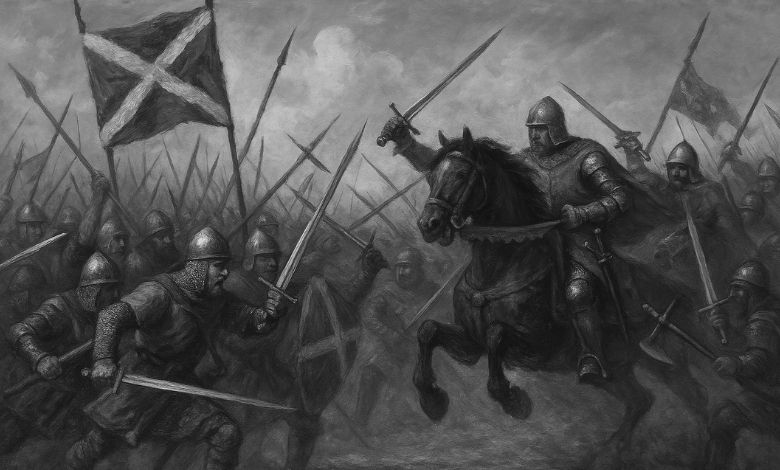
When it comes to wars, whether Scotland wanted freedom or attacked enemies, Clan Robertson always fought at the frontline. The story begins with the Scotland War of Independence, where the clan supported Robert the Bruce. They did the same in the second war when Scotland became a free country.
The next event that hugely impacted the structure of Scotland was the Jacobite Rebellion which continued for almost 60 years. The poet chief “Alexander Robertson of Struan” participated in all battles of this series. The chief, along with his clan, showed loyalty to Prince Charlie and was captured. The Donnachaidh tribe fought many other wars with enemies, even internal feuds were common then. Here are some popular wars they took part in:
- Wars of Scottish Independence
- Battle of Bannockburn
- Battle of Neville’s Cross
- Battle of Inverlochy (1645)
- Battle of Tippermuir
- Battle of Dunkeld
- Battle of Sheriffmuir
- Highland Clearances
Clan Robertson Chiefs
The current chief Alexander Gilbert Haldane Robertson of Struan is the 23rd earl of the clan who succeeded this clan after his father died in 1983. He lives in England now, the rest of the chiefs were:
- Duncan 1305-1355
- Robert de Atholia
- Duncan (Crosda) de Atholia
- Robert (Riabhach) de Atholia d.1460
- Alexander Robertson d.1505 succeeded by his grandson
- William Robertson of Strowan, executed in 1516
- William Robertson of Strowan d.1588 succeeded by his brother
- Donald Robertson of Strowan
- Robert Robertson of Strowan d.c1630
- Alexander Robertson of Strowan d.1636
- Alexander Robertson of Strowan d.1688
- Alexander Robertson of Strowan d.1749 succeeded by a cousin twice removed
- Duncan Robertson of Strowan d.1782
- Alexander Robertson of Strowan d.1822 succeeded cousin
- Alexander Robertson of Strowan d.1830
- George Duncan Robertson of Strowan d.1842
- George Duncan Robertson of Strowan d.1864 succeeded by his uncle
- Alexander Gilbert Robertson of Strowan
- Alasdair Stewart Robertson d.1910, was succeeded by cousin.
- George Duncan Robertson of Struan d.1949
- Langton George Duncan Haldane of Struan d.1983
The Strongholds
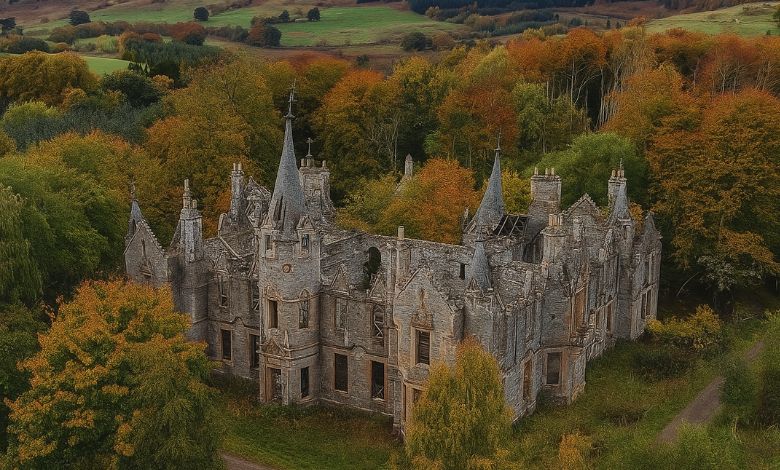
The clan was considered a powerful tribe of Scotland, the number of strongholds or the fortresses verdicts it. Donnachaidhs had control over many castles in every era. Some of them are still available at their places, while some castles are in the form of ruins.
Dunalastair Castle: Abandoned a few decades ago, this castle still exists, telling a lot about the history of Scotland. Once it was a prominent stronghold of the clan.
Invervack Castle: People also know this fortress as the “Black Castle of Invervack.” It served as the seat of the Robertson chiefs during the 16th century. However, it failed to serve the clan for a longer time and Cromwell’s forces burnt it. The mishap happened during the suppression of the Royalist Glencairn Rising in 1654.
Lude Castle: The Clan Robertson kept it in the 17th century. Like Iverneck Castle, it was also torched by the forces of Oliver Cromwell in 1650. The incident was the reaction of Alexander Robertson of Lude’s battle on the side of James Graham.
Auchleeks Castle: A Georgian home eventually replaced the 16th-century old fortress. Up to the 20th century, Robertson owned the estate. Even though there are no obvious remnants of the old tower left, the historical arrangement of the estate honours its existence.
Clan Center and Museum
Those who truly want to experience the history of Clan Donnachaidh should consider visiting the official museum. Thousands of artifacts deserve to be seen. A few of them are:
| Bonnie Prince Charlie Brooch | Bonnie Prince Charlie Shoe Buckles |
| A dirk blade, approximately used in 1690 | Johnny Cope’s Fiddle |
| Clach na Bratach | 700 years older, Stone of the Standard |
| Woodsheal’s Flintlock Pistol | Ballock Dagger |
Final Verdict
All the Scottish clans have changed their names with time but Clan Donnachaidh still uses what it was called in the 1300s. This clan has a vast history. The members still wear their associated tartan kilts. People of all ages have been a sign of bravery and encouragement, thus, it is what their motto and clan tartan represent. Being part of the Scottish heart, the clan led many battles favouring the Scottish monarchy. Many fortresses, once controlled by the tribe, are worth touring since they have a lot to narrate about Scottish history. For a more precise experience, visiting the Clan’s official museum may be very fruitful!


